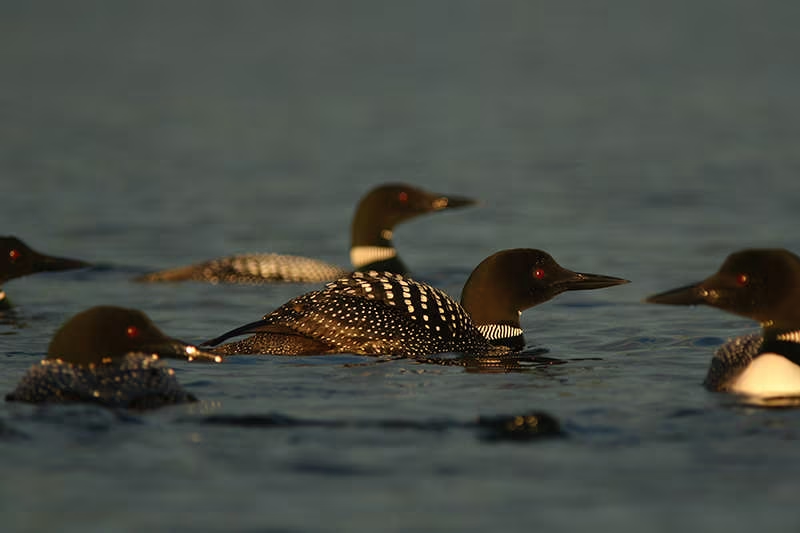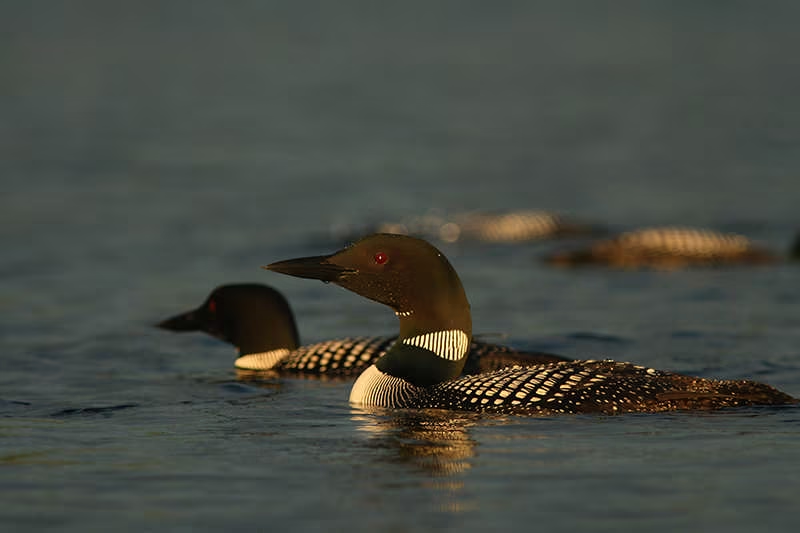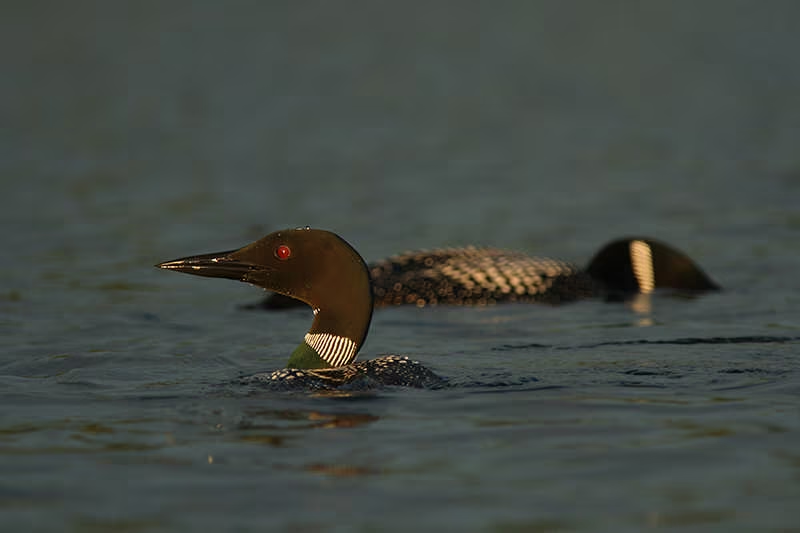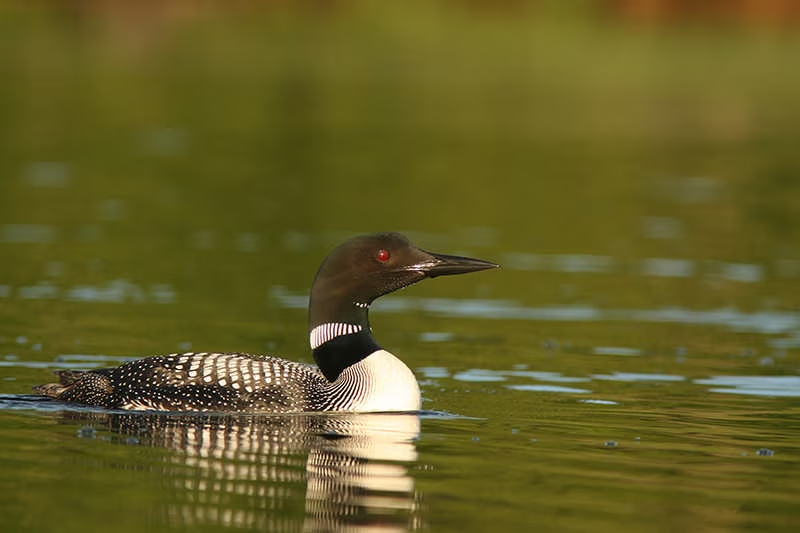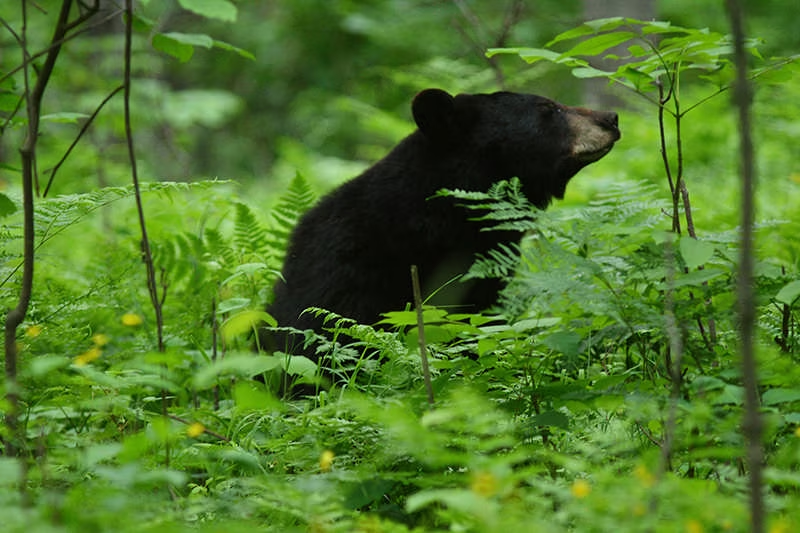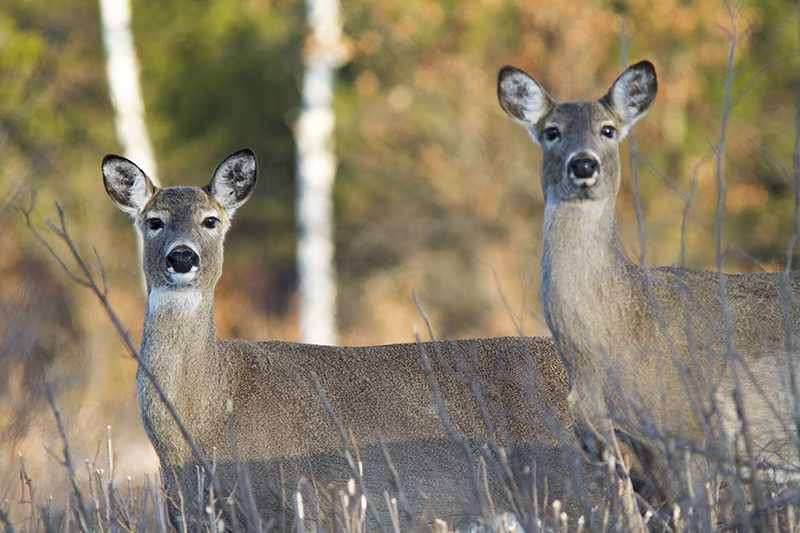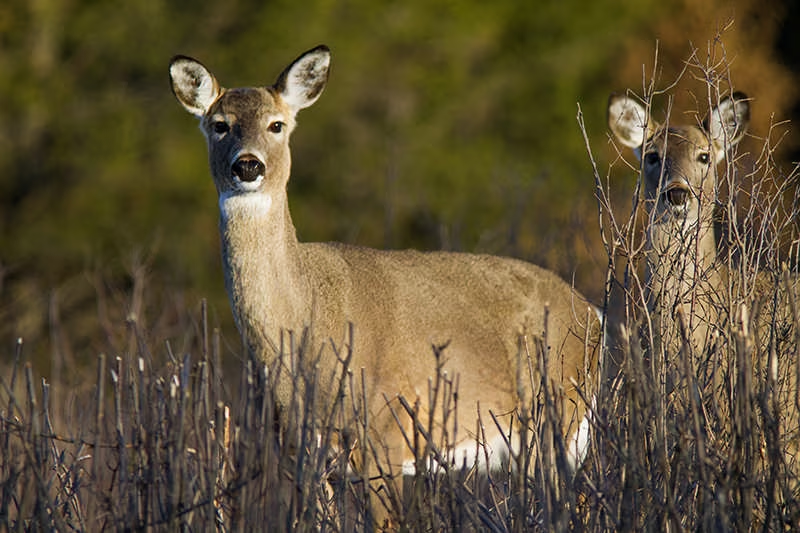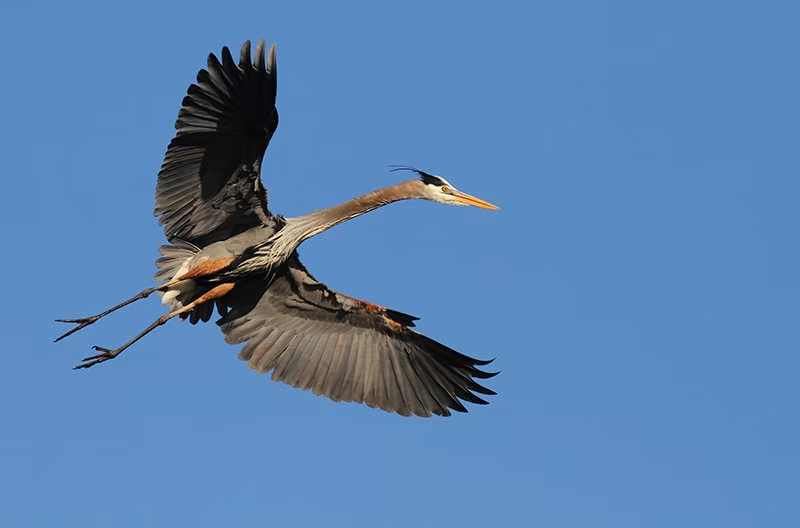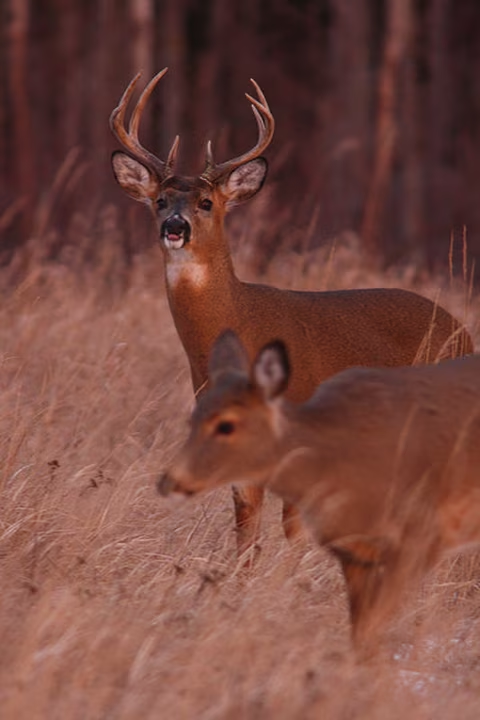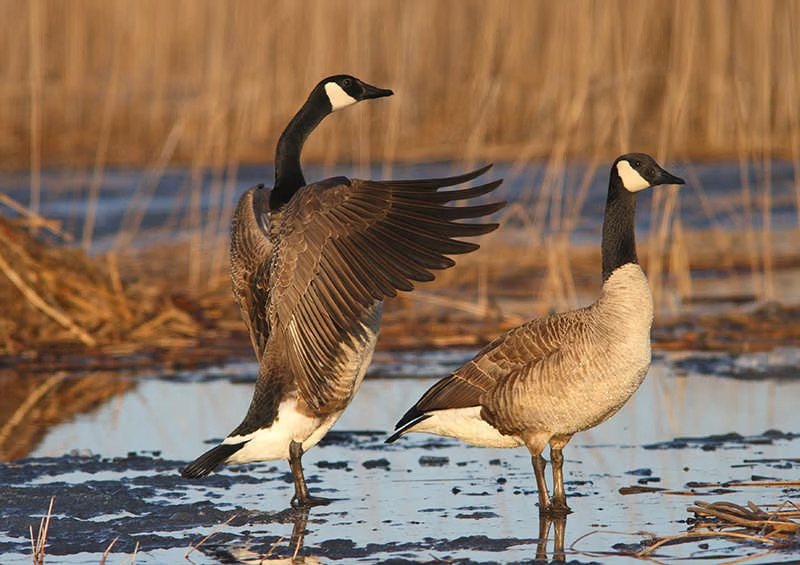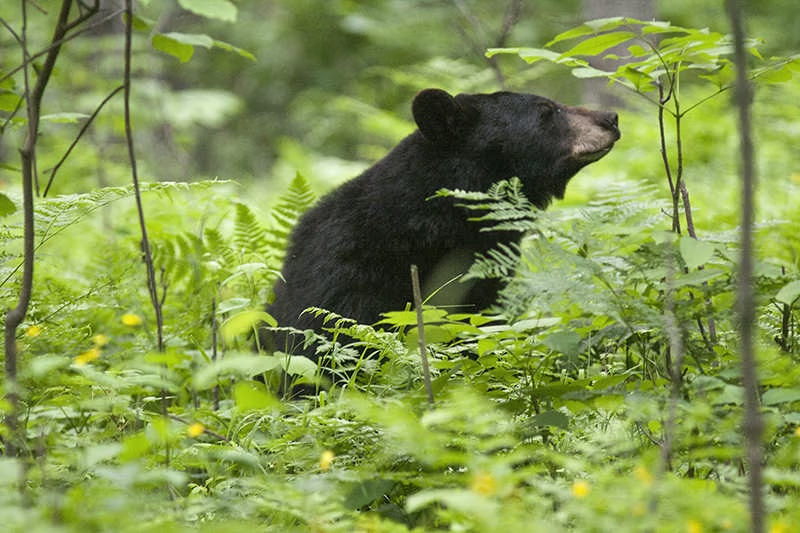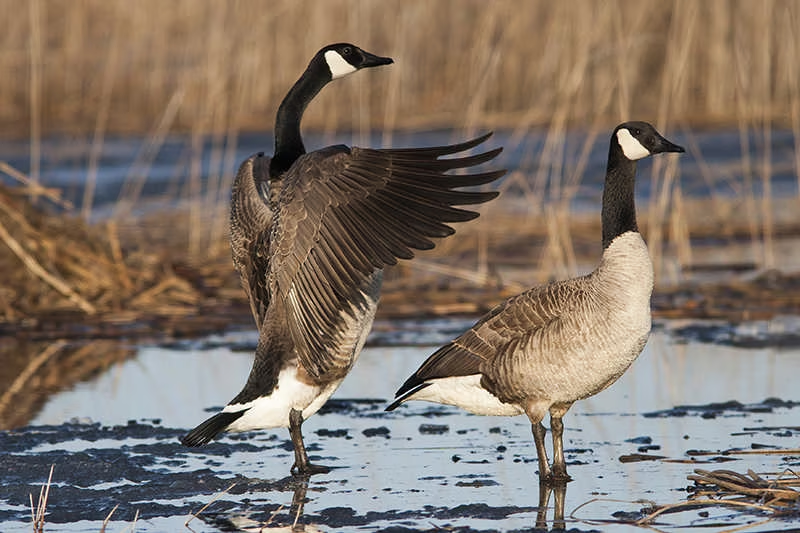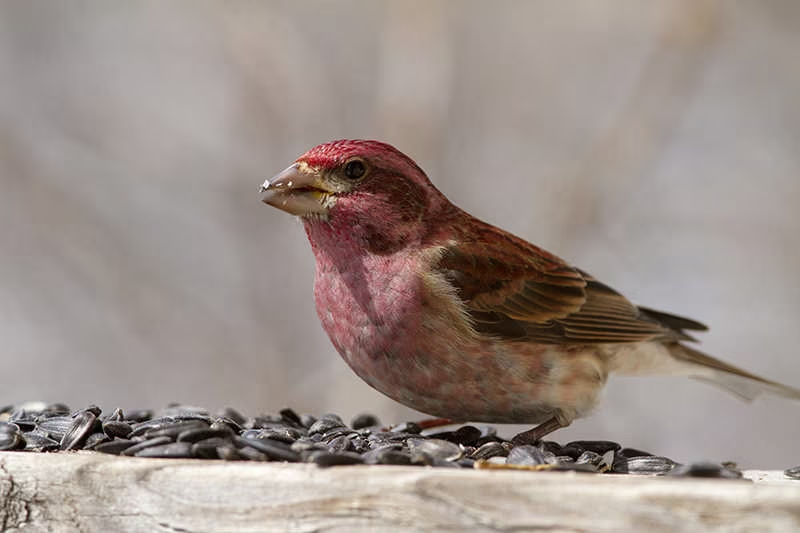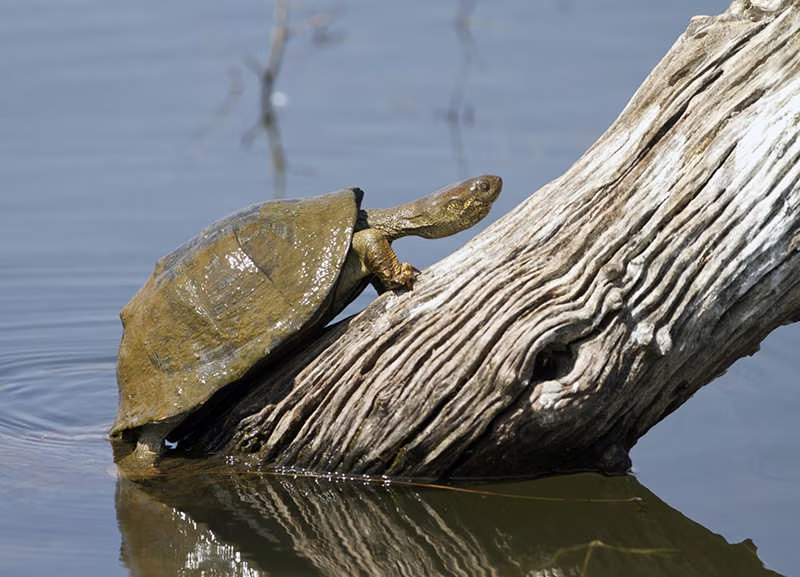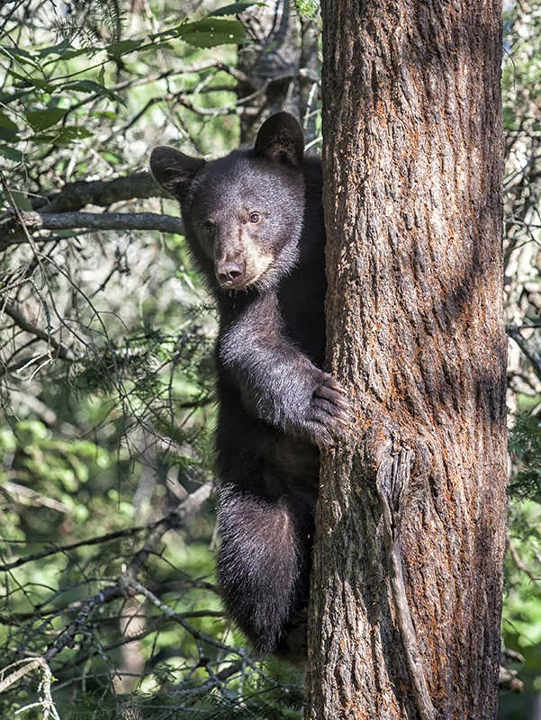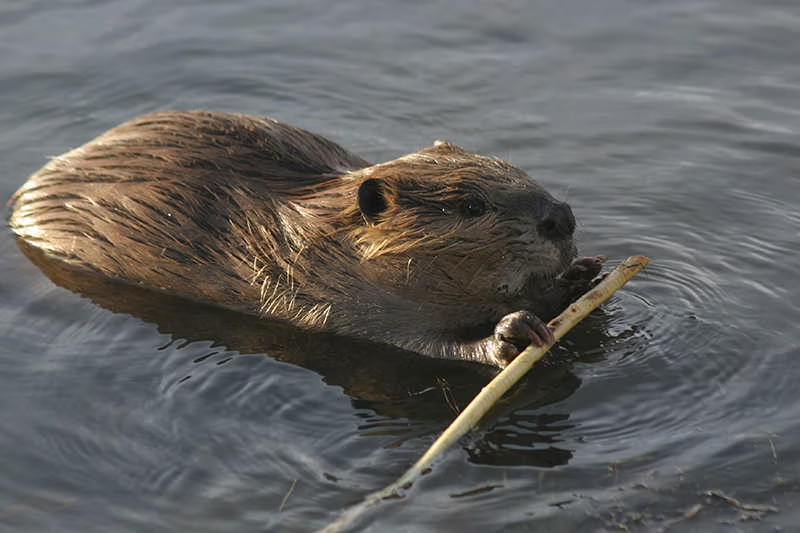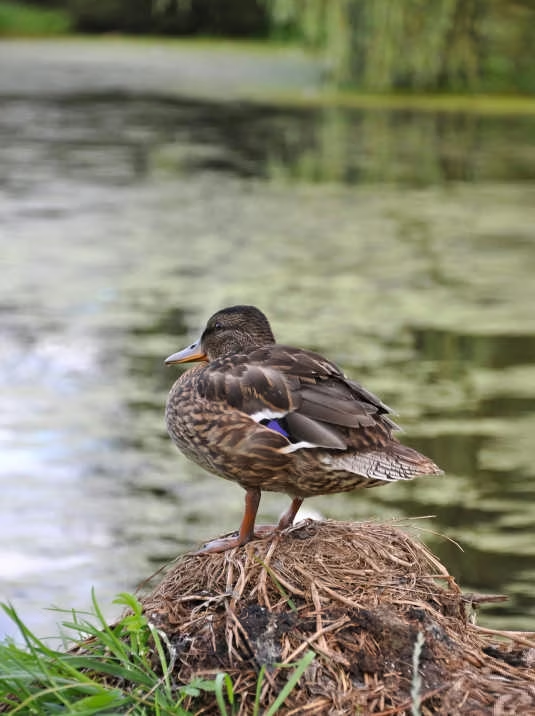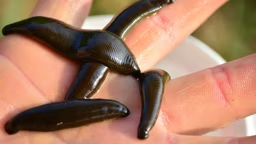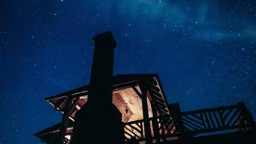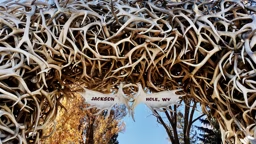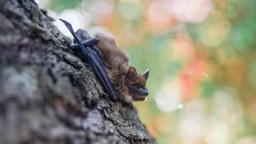By Brian M. Collins
It was August already, late summer. Too late for an egg-incubating loon, but my eyes were fixated on a distant loon hunkered over its nest. A cluster of ripe blueberries growing just behind the nest accented the beauty of the bird. The photograph would be unusual and stunning if I could just get close enough. I moved my canoe paddle to the back of the canoe, out of view of the bird. I could scull and brake without flashing the blade of the paddle, without causing more stress to the bird. I was young though and didn’t realize how many steps into “screwing up” I had already taken. Just one more paddle stroke and the photograph would be mine. Suddenly, the loon slid off of the nest into the water and began a powerful, startling, yet elegant dance on top of the water, drumming its feet, puffing its feathers, and slapping its wings on the water.
Frozen in the moment, I didn’t even look through the lens. The distraction display, intended to lead a predator away from its eggs, had worked to a modern effect: no pictures. It was my first visit to the nest, and it would be my last. The moment changed me as a photographer. I definitely became more respectful of my wildlife subjects. Here is some helpful advice for cabin wildlife watching.
Lakeside watching
Some of the most iconic residents of lake country are also the most sensitive to human encroachment. The enchanting calls of the Common Loon have been around longer than all of us, but this species maintains itself with a slow reproduction, increasing at less than 3% per year. Loons are just one of the many sensitive species that rely on clean water, abundant prey, and the calm and quiet solitude of at least one undeveloped back bay or forested island. When boating, be sure to give loons at least 200 feet of space, especially when they have young. Keep a low wake or “no wake” boat speed when passing by loon-nesting habitat, and avoid loon-nesting habitat when enjoying open water recreation. When watching wildlife from a boat, keep it quiet, slow and somewhat distant. As a rule of thumb, if the conduct is fair practice for the loons, it should be good for other species as well.
Leave it natural
To attract wildlife to the lakeshore, consider leaving fallen trees as they are. The branches that have fallen into the lake provide habitat for fish, and the branches above the water serve as perches for birds and basking platforms for turtles. Placing decorative native plantings on the shoreside of a fallen tree will help offset any neighborly concerns for an unkempt shoreline while providing further habitat for birds and butterflies. Arrangements of perennial flowers, shrubs and trees can be used to create landscape art while providing fruit, nectar and nesting cover for wildlife. Many species of beneficial insects are attracted by blossoms, and, in turn, many birds show up to eat the insects. Do your homework on plant choices and consult with local wildlife experts. Your lake association may also have a committee dedicated to wildlife and natural beauty. It has been said that clean lawns can make dirty lakes, as lawns of monoculture green grass allow pesticides, herbicides and soil to leach into the lake. Providing vegetative habitat on the shoreline creates a healthy erosion buffer that physically protects the lakeshore while also absorbing fertilizers before they can contaminate the lake. The wider the buffer, the greater the benefit.
Feeding wildlife
Whether providing for wildlife with a single bird feeder or a whole wildlife feeding system of suet, seed feeders and ground feeders, there is something distinctly human in doing so. Human compassion and empathy are richly entwined with curiosity and a fascination for the colors, shapes and behaviors in a close encounter with wildlife. But it is important that anyone who feeds wildlife be able to read a situation and understand when change is necessary. For instance:
- Feeding stations can spread diseases when improperly maintained. Birds fall prey to salmonella outbreaks, and deer can spread diseases from concentrated feed sources. Feed piles encourage deer to nose around in the saliva and nasal secretions of other deer, potentially spreading bovine tuberculosis, chronic wasting disease (CWD) and other diseases.
- There are many situations where feeding deer may be unacceptable or even illegal. Piles of feed placed in yards near busy roadways can endanger motorists and deer alike. And drawing a herd of deer into a grove of a neighbor’s prized plantings may not be harmful to the deer, but it sure could hurt a friendship!
- If enthusiastic bears and raccoons cause property damage because they found your feeder setup, the best recommendation is to discontinue feeding for more than two weeks until these animals amble on elsewhere.
In general, practices that habituate wild animals (especially mammals) to people and cause animals to generalize people as giving them sources of food should be avoided. Nobody wants to be chased by an overly enthusiastic squirrel! When feeding stations result in damage to wildlife, property or friendships, it is time to re-evaluate the type of setup, the type of feed, or the location of the feeders. Otherwise, maintaining an effective feeding station can be a richly rewarding experience. Whenever encountering a wild creature, it is important that we show restraint and respect, and put the greater good of wildlife populations and future generations ahead of our own curiosity.
Brian M. Collins works as a contract wildlife biologist. He is an avid birdwatcher, hunter, fisherman and wildlife photographer.
RESOURCES
- Code of Birding Ethics, www.aba.org/about/ethics.html
- Leave No Trace, www.lnt.org



